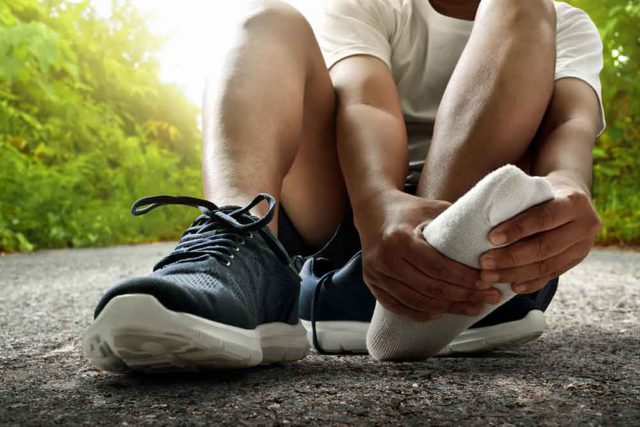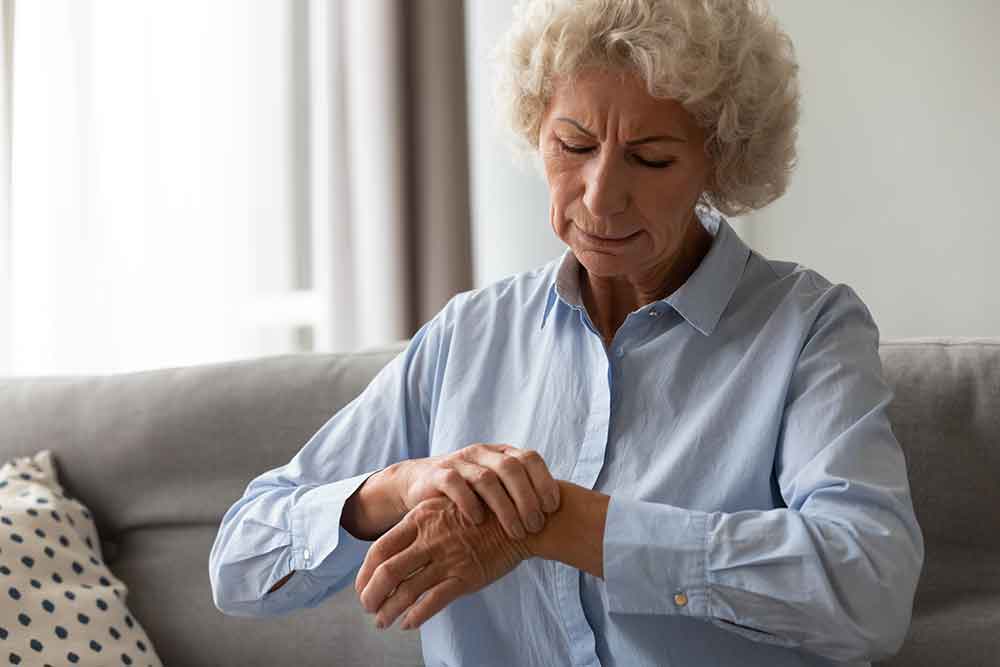
The two most common types of arthritis are:
Osteoarthritis is the most common type of arthritis in the UK, affecting around 8 million people.
It most often develops in adults who are in their late 40s or older. It’s also more common in women and people with a family history of the condition. However, it can occur at any age as a result of an injury or be associated with other joint-related conditions, such as gout or rheumatoid arthritis.
Osteoarthritis initially affects the smooth cartilage lining of the joint. This makes movement more difficult than usual, leading to pain and stiffness.
Once the cartilage lining starts to roughen and thin out, the tendons and ligaments have to work harder. This can cause swelling and the formation of bony spurs, called osteophytes.
Severe loss of cartilage can lead to bone rubbing on bone, altering the shape of the joint and forcing the bones out of their normal position.
The most commonly affected joints are those in the:
Further information and support:
You can also use the NHS postcode search to find arthritis services in your area.
In the UK, rheumatoid arthritis affects more than 400,000 people. It often starts when a person is between 40 and 50 years old. Women are three times more likely to be affected than men.
Rheumatoid and osteoarthritis are two different conditions. Rheumatoid arthritis occurs when the body’s immune system targets affected joints, which leads to pain and swelling.
The outer covering (synovium) of the joint is the first place affected. This can then spread across the joint, leading to further swelling and a change in the joint’s shape. This may cause the bone and cartilage to break down.
People with rheumatoid arthritis can also develop problems with other tissues and organs in their body.

The symptoms of arthritis you experience will vary depending on the type you have.
This is why it’s important to have an accurate diagnosis if you have:
There’s no cure for arthritis, but there are many treatments that can help slow down the condition.
For osteoarthritis, medications are often prescribed, including:
In severe cases, the following surgical procedures may be recommended:
Read more about how osteoarthritis is treated.
Treatment for rheumatoid arthritis aims to slow down the condition’s progress and minimise joint inflammation or swelling. This is to try and prevent damage to the joints. Recommended treatments include:
Read more about how rheumatoid arthritis is treated.
You can also use the NHS post code search to find arthritis services in your area.
You can self-refer into community physiotherapy services. Simply call 0207 871 0545 to make an appointment. Your initial contact with one of our chartered physiotherapists may be over the phone, where you will either be given advice on appropriate treatment, or a face-to-face consultation will be arranged.
Should you wish to speak to your GP first, simply make an appointment with your local practice. If your GP refers you, one of our patient care advisers will contact you within 48 hours to arrange an appointment.